Features of transplanting hydrangeas from one place to another
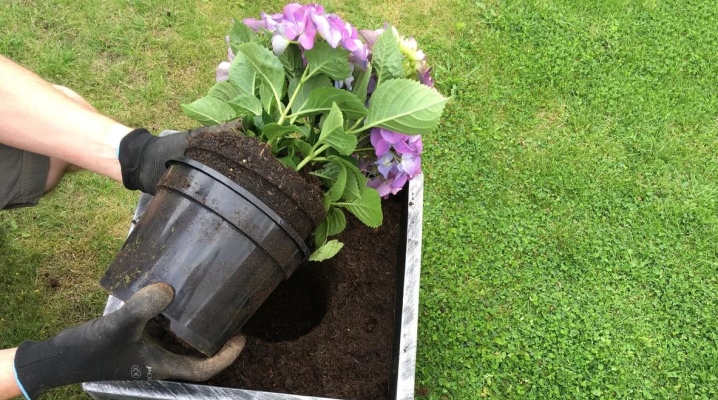
Hydrangea has long become one of the favorite flowers of gardeners who care about the appearance of their plots. Its bushes bloom very luxuriantly and attract everyone's attention. In one place, they can grow for about 10 years. However, in situations where growth is slow enough, flowering is short-lived, and the flowers themselves are weak and small, it can be assumed that the hydrangea was planted in the wrong place for it, and try to fix it.

Why and how often do you need to replant?
Gardeners plant hydrangeas in their plots to delight them with abundant and lush flowering. This can be achieved by providing the plant with proper care. One of its nuances is a competent transplant, which should be done on time.
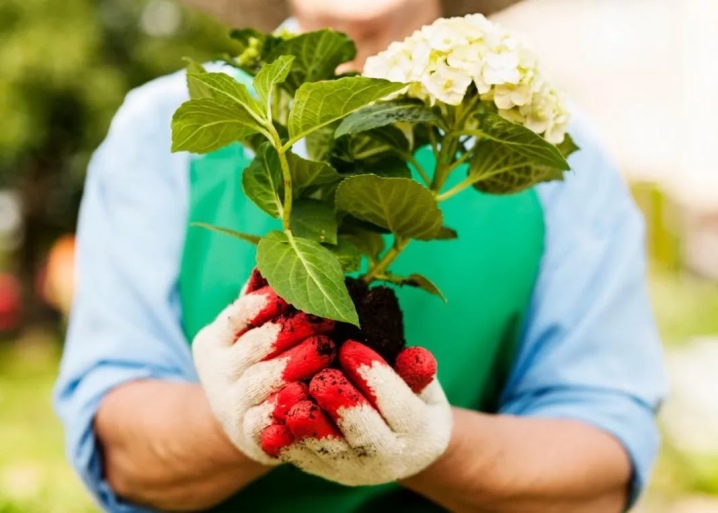
The main question that novice growers often ask is why a plant needs to be transplanted and how often it needs to be done. There are several main reasons.
- The main reason a hydrangea needs to be transplanted is the wrong place where it grows. The soil may not have the required properties. In addition, if the flower is located incorrectly, it will interfere with people, which is also not the norm.
- Another reason may be soil depletion. Experts say that hydrangea can grow in the same place for about 10 years. However, it is best to transplant once every 5 years.
- When it comes to a houseplant, it tends to grow. In this case, the pot in which it was originally placed becomes small. Accordingly, it becomes necessary to replace it.
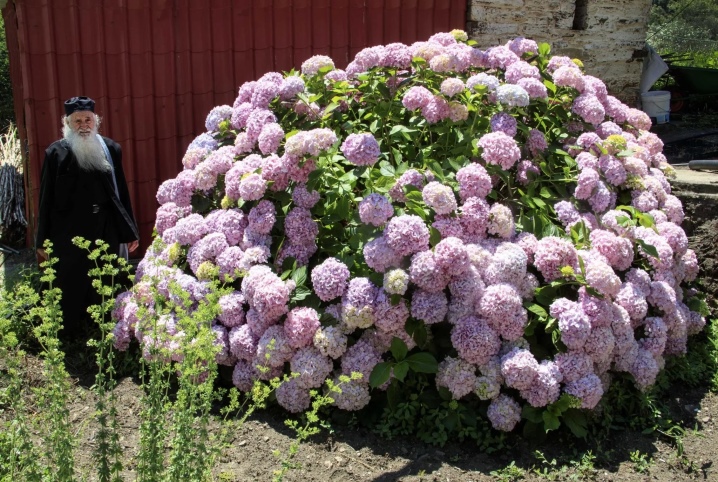
The question of the time and necessity of transplanting must be decided by the gardener.
It depends on a number of circumstances. If the hydrangea is not feeling well, you should not postpone the procedure. In another situation, when there are no comments on the plant, it pleases with active growth and violent flowering, this event may be irrelevant. Besides, you should take a responsible approach to choosing a place, because if it turns out to be unsuitable, even a healthy flower may simply die.

Optimal timing
As for the timing of the transplant, the most suitable time for this procedure is spring and autumn. In the first case, events are held from the end of March until the very beginning of summer. Their advantage is that the soil has time to warm up by this time. In the autumn period, work can be carried out already in September, then the hydrangea will have time to take root before the first cold weather.

Each of the periods has its own pros and cons.
For example, in the fall, a transplanted hydrangea may not have time to take root if the cold snap comes ahead of time. It should be noted that even frost-resistant plant varieties do not benefit from a nightly drop in temperature... This means that already in October it is necessary to take care of insulation, that is, cover the soil with peat, and also cover the branches with spruce branches and polyethylene. Among the advantages of work in this season can be noted earlier flowering, which occurs because the plant has time to acclimatize and take root long before the onset of summer.
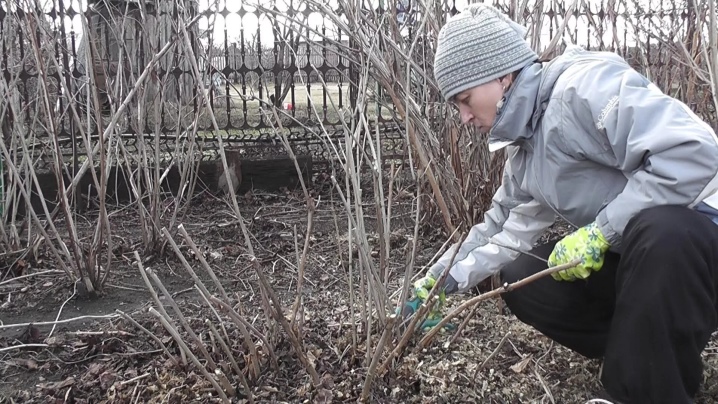
If the procedure is carried out in the spring, hydrangeas may face freezing of the roots due to late frosts. In especially severe cases, the transplanted plant may simply die. In another situation, this leads to late bud formation and flowering, and the timing can be shifted by 1-2 months. Accordingly, it is most preferable for most gardeners to perform these manipulations from August to September.
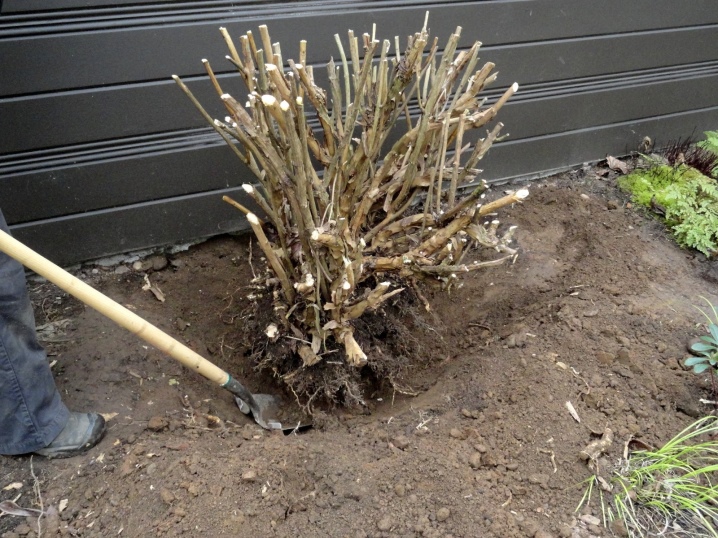
As for the summer period, and this is mainly June and July, when the hydrangea begins to bloom actively, it should not be transplanted. The fact is that the shrub gives maximum strength to flowering, respectively, if you disturb it at this time, for the next few years it will simply not bloom... In late spring and early summer, cuttings and cuttings can be planted, this allows them to take root and adapt to the first frost.
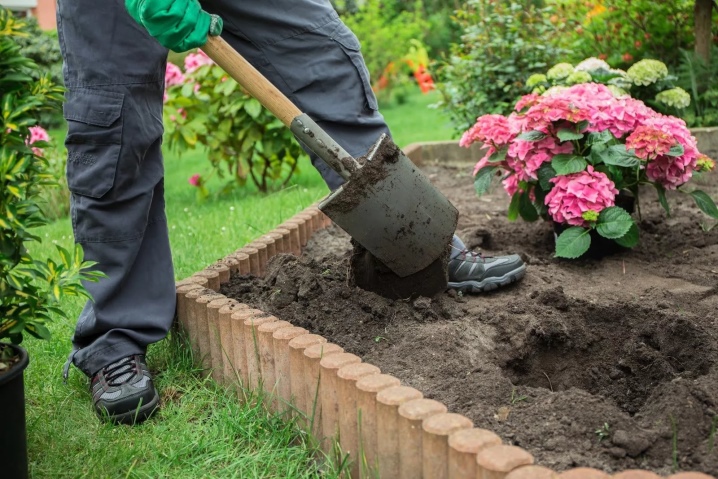
It should be noted that the transplant is not always painless for the flower.
In some situations, there is a risk of damaging the roots. This is especially dangerous in the spring when the shrub is developing and therefore requires a healthy root system. In the fall, the situation is easier, because the roots in a dormant state will react much more calmly to stress. By spring, the hydrangea will have time to take root and will be ready to please the gardener with bright and lush buds.
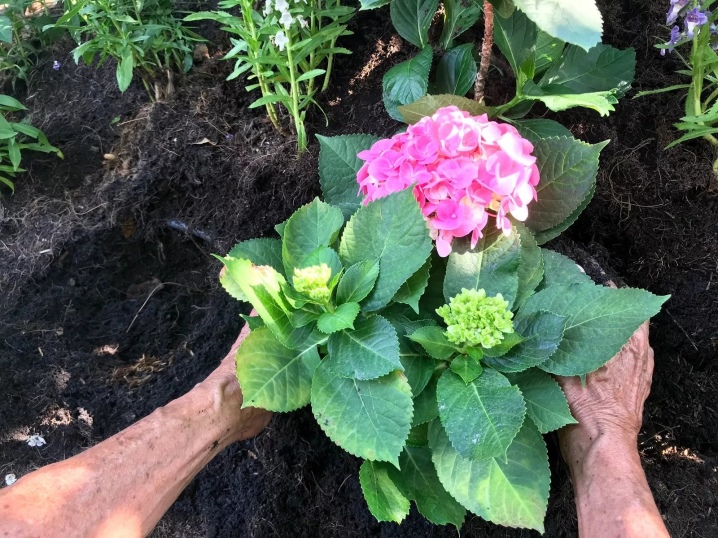
Site selection and soil preparation
In order for the plant to feel as comfortable as possible, it is necessary to choose the right place for it, as well as to competently approach the preparation of the soil. For hydrangea, the most preferable places will be where in the first half of the day it will be in the sun, and in the second it will hide in partial shade. Too sunny areas should not be chosen, since the shrub will burn the leaves from constant exposure to sunlight, and the inflorescences will become smaller and begin to dry.
It should be borne in mind that a strong shadow is also contraindicated for him, problems with flowering may begin.
The site should be hidden from winds and drafts. If you place a hydrangea near the wall of a building, there will be a risk of freezing of the roots in the cold season., therefore, it must be transplanted to a place located at least 1.5 meters from the wall. Above there should be no structures from which water will flow onto the bush during precipitation or snow will roll down. This can lead to excess moisture in the soil and injure the branches of the plant.
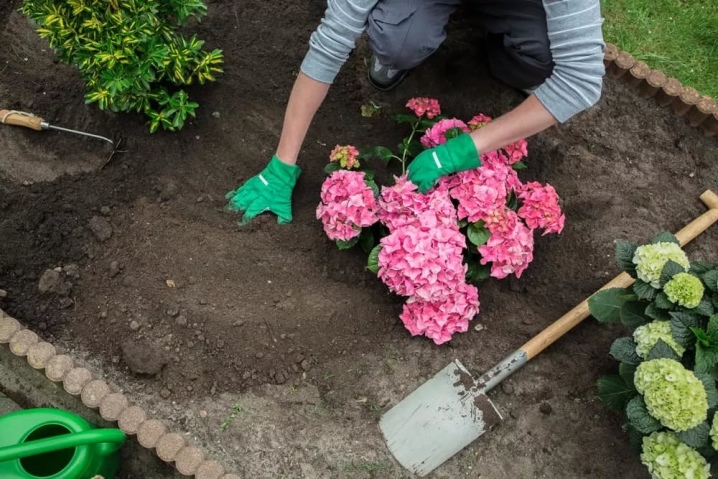
It is best to opt for soil that is rich in organic matter. It should be slightly sour and fairly loose. In some cases, the soil will need to be specially acidified to make the hydrangea feel comfortable. If the soil turns out to be alkaline, this threatens the shrub with a deficiency of nutrients such as iron and magnesium. The lack of these elements affects the production of chlorophyll, which entails chlorosis.
With this disease, hydrangea leaves turn yellow and begin to wither. Therefore, alkaline soils should be discarded.
Low or high levels of lime in the soil can also adversely affect the plant. To avoid its increase, it is not recommended to transplant the hydrangea in places located in the immediate vicinity of concrete structures or sidewalks.
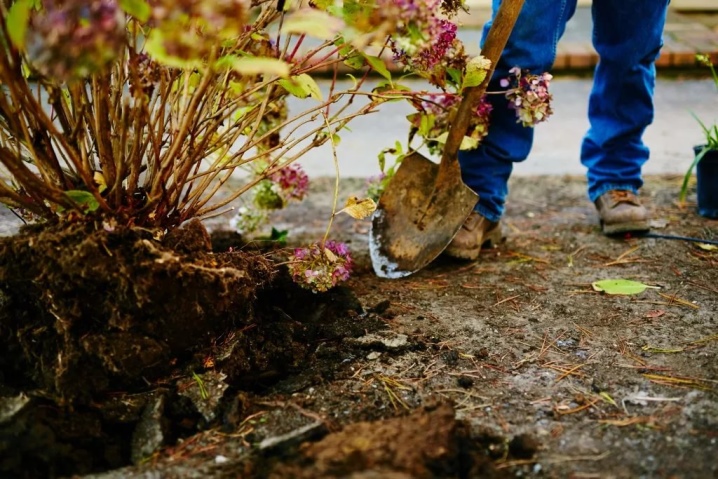
The acidity of the soil affects the color of the buds. On neutral and alkaline, pink buds predominate, while acidic soil is characterized by a blue and purple shade of inflorescences. If there are several shrubs, and the soil has different acidity, the flowers will have a different color.
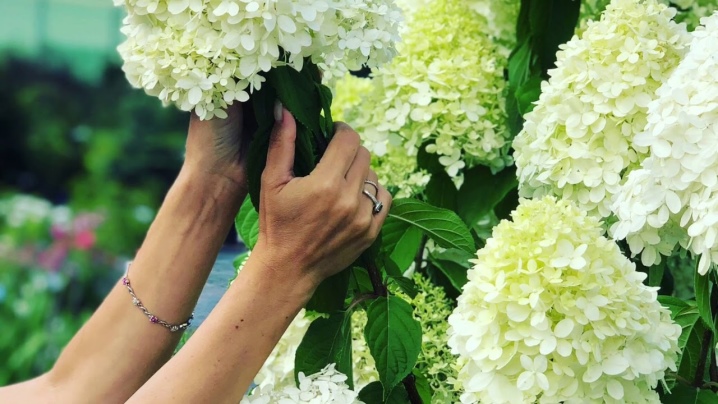
Gardeners offer a sure way to determine the acidity of the soil. This will require 1 teaspoon of earth, which is poured onto the glass, after which it is poured with 9% vinegar. If the reaction produces a sufficient amount of foam, the soil can be called alkaline. When there is little foam, it is neutral. If it is not there at all, it means that the soil is sour. Accordingly, depending on the results of the study, you can decide what shade of inflorescences you need and transplant the hydrangea to the right place.
It should be borne in mind that the previous place of growth of the flower also plays an important role. If the plant is doing well, this means that the soil performance in the new site should ideally be similar.
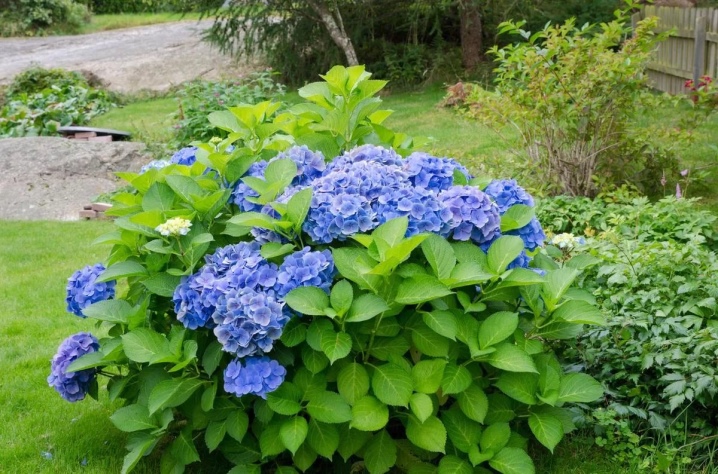
Prepare the soil in advance. It all depends on the estimated timing of the transplant. If it is planned in the spring, feeding should be organized in the fall. Heavy soil will need to be dug up so that there are no large lumps left. After that, it is watered, and the next day it is fertilized with humus, leafy soil and sand, taken in different proportions. A little potassium sulfate and superphosphate are also added there. You need to dig up the ground after fertilizing has been introduced into it. This is done to a depth of about 15 centimeters.
As for the alkaline soil, it is necessary to add red high-moor peat to it.
2-3 kilograms per 1 m2 will be enough. The measures taken will provide the soil with useful substances for the next couple of years.
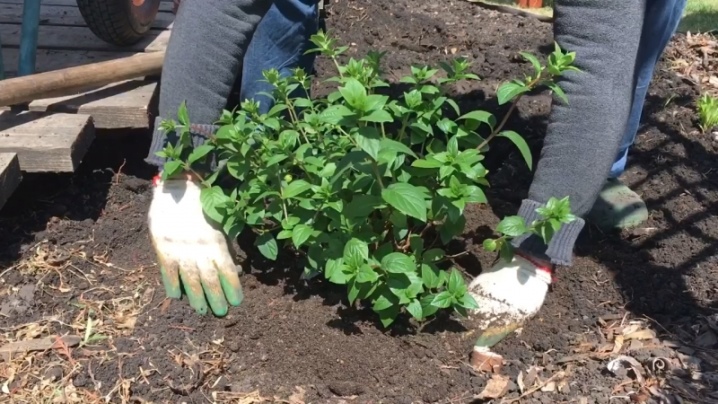
How to transplant correctly?
Planting a garden hydrangea is done in several ways. Among them are the transplanting of a whole bush, its division, cuttings and layering. A whole bush is transplanted most often in order to create the necessary composition. To do this, you must carefully cut out the root system, and then place the hydrangea in a new place with the ground. When dividing, the hydrangea is divided into several parts with the condition that each has developed roots.
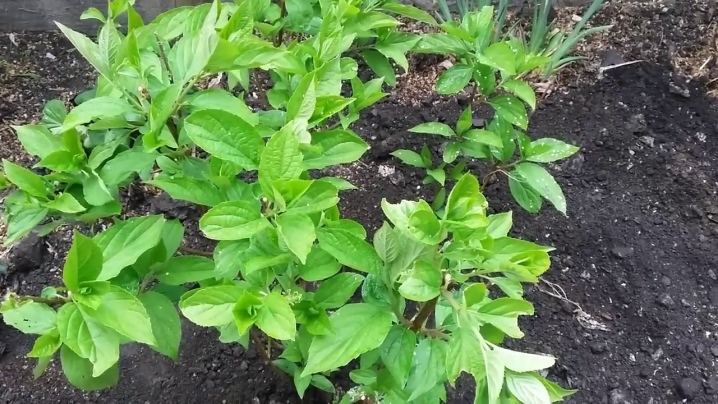
If you need to prepare cuttings, you will need one-year-old shoots about 15 centimeters in length. Each of them should have a couple of leaves and several buds. Cuttings should be placed in water and wait until the root system begins to develop. After this, landing in the ground takes place. To provide the necessary moisture, the plants are covered with foil and periodically ventilated.
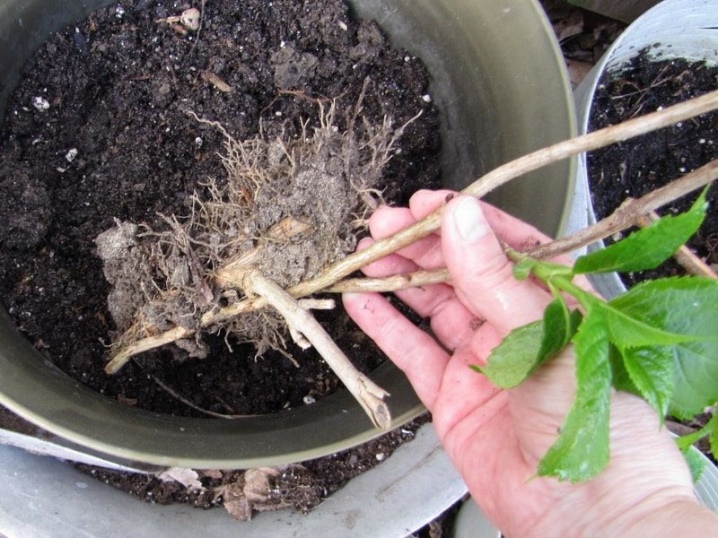
To obtain layering, at the very beginning of spring, it is necessary to lower the side shoots into specially prepared trenches about 10-15 centimeters deep. There they are carefully fixed and sprinkled with earth, which must be constantly moistened. The branch is made a year later, when the hydrangea takes root. It is carefully dug up and, together with the ground, moves to a permanent place.
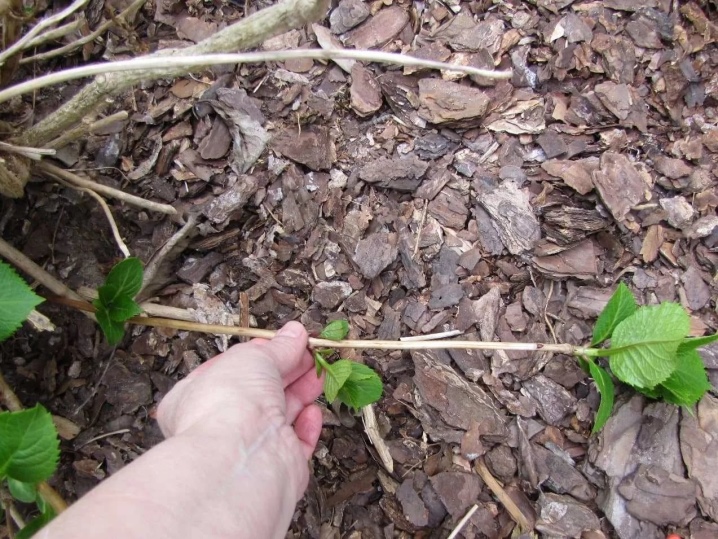
First you need to prepare a landing hole. Its size will depend on the age and size of the bush that needs to be transplanted. For a young hydrangea less than 3 years old, you will need a planting hole 50 centimeters wide and deep. Older bushes (3 to 5 years old) require a 100 x 100 centimeter hole. Finally, for older plants, you need to prepare a hole 150 centimeters deep and wide.
Preparation is carried out in the autumn.
Approximately half of the hole is covered with prepared soil mixture. With the onset of spring, it is time to move on to preparing the bush. First you need to carry out sanitary pruning, remove thickening and dry shoots. All the rest must be tied together, so they will interfere less when working.
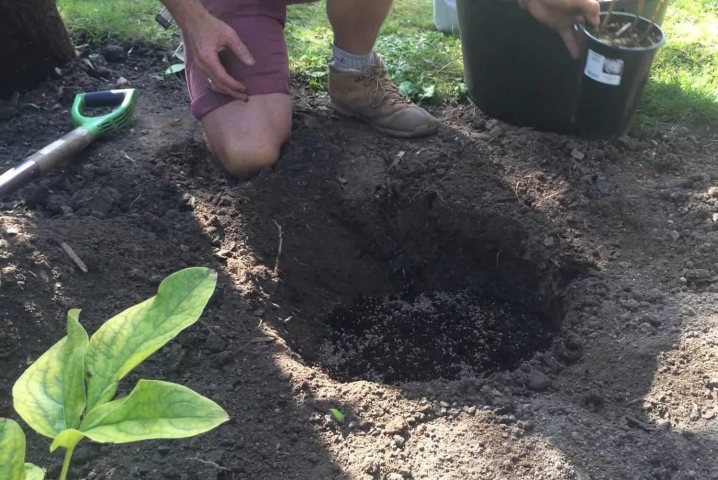
The soil around the bush is dug in. During this procedure, the roots are freed by cutting out along with the soil, which should not be removed so as not to damage the plant. The bush is transferred to a new place, placed in a planting hole and covered with soil mixture.
It is necessary to pay attention to the level of penetration, it must correspond to the previous one.
When transplanting, you should not immediately water the bush. The procedure is carried out only after 2-3 days. This will keep the hydrangea roots from hypothermia.

The transplant carried out in the spring is slightly different from the autumn one. For example, in the second case, pruning of shoots is not required. Only dried branches and inflorescences need to be removed. Watering is carried out immediately after the procedure. To prevent the shoots from starting to grow, fertilizers should not be applied to the ground.
It should be noted that indoor hydrangea is transplanted immediately after purchase.This is because the ground can be contaminated with mealbugs. If the signs of the disease have already begun to appear, the procedure should be carried out immediately.
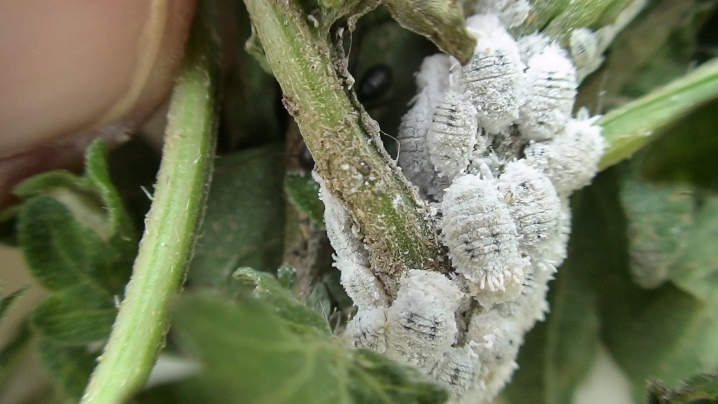
Indoor hydrangea needs to be replanted annually.
This will help renew the depleted soil, as well as replace the flowerpot with a larger one if necessary. Each time it should increase by 4 centimeters. A larger increase in the size of the pot will lead to the fact that the forces that the flower must spend on the formation of buds, he will start up on the formation of greenery. You should also think about providing a drainage system in the tank.
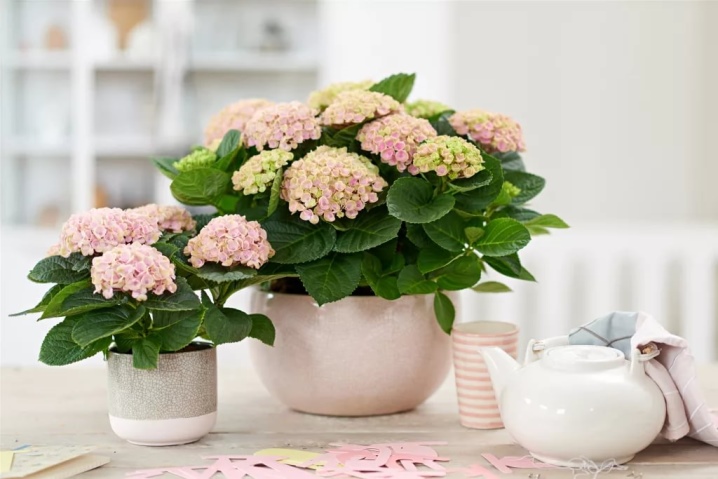
In the case when the bush grows enough, you can carry out a rejuvenating procedure. In this case, it is divided into several parts. The plant should be watered and sprayed regularly, and it is forbidden to use cold water.
Indoor hydrangea also needs fertilization.
They are introduced during active development. Protect the culture from direct sunlight and drafts.
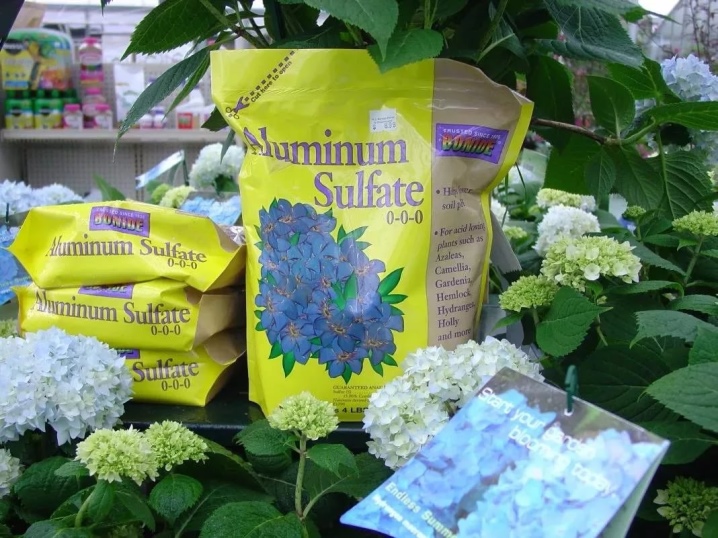
Further care
Gardeners appreciate hydrangea for its unpretentiousness and ease of care. The shrub can grow and develop in various conditions, for example, in gas-polluted areas, next to which there are busy highways. However, in any case, you will still need to follow him. Especially when it comes to transplanting, when the plant is weakened and needs increased attention.
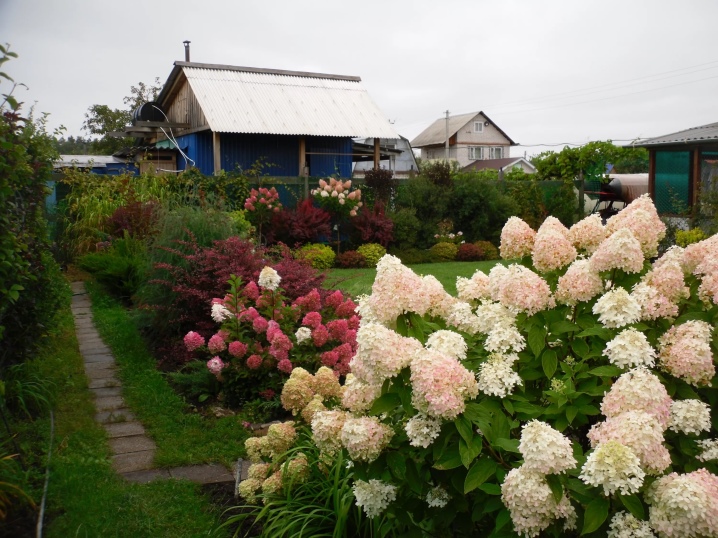
You will need to take care of the garden hydrangea as follows. First of all, you need to take care of watering. The procedure should be carried out 2 times a week, about 1-2 buckets of water are needed for each bush. Do not use tap water. The liquid must be settled, rain or thawed.
Water the plant in the morning or evening to protect it from sunburn.
It is also recommended to loosen the soil around the trunk circle. The procedure is performed weekly and improves oxygen access to the root system. It is also necessary to remove weeds in a timely manner. Mulching will help to provide the necessary level of soil moisture and get rid of weeds. In addition, the ground can be covered with agrofibre, preferably dark.
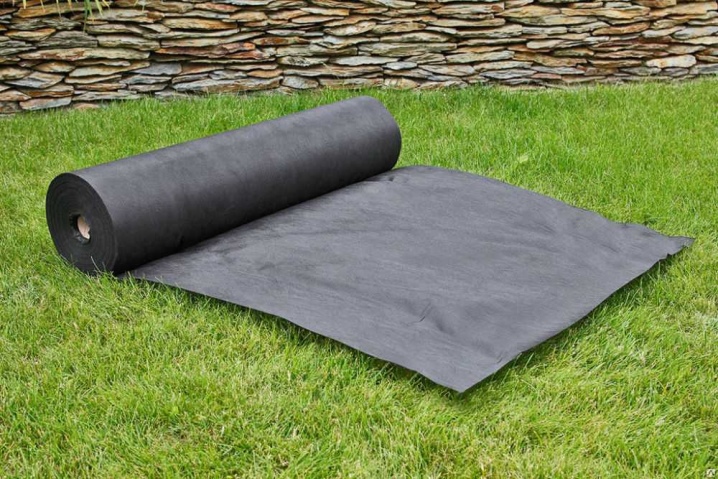
After the transplant has been carried out, fertilizers are not required for the shrub. He will receive them from a soil mixture specially prepared for the procedure. However, over time, it will be necessary to add top dressing, the first of which is done before flowering, when the buds will form. A special mineral complex for garden flowers, which can be purchased at the store, is perfect for her. An indicator of successful adaptation is the release of fresh leaves.
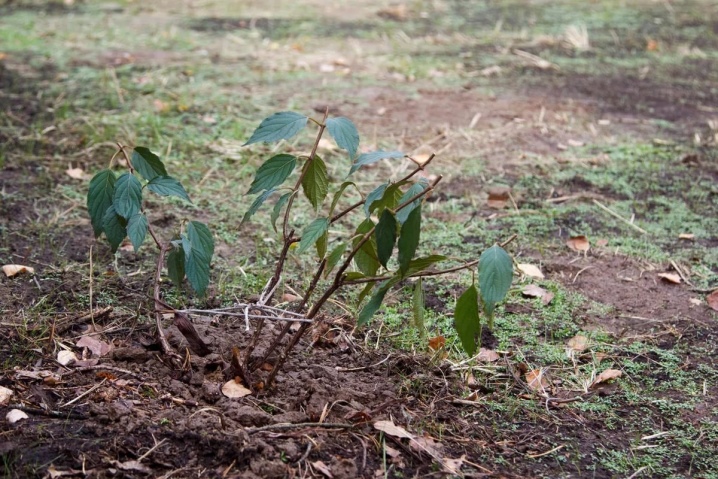
When it comes to indoor hydrangea, the care will be different. The first 2 weeks after transplanting are especially important for acclimatization. At this time, the flower pot is removed in partial shade. It will be necessary to maintain the soil in the required condition, it should not dry out or be flooded with water. You need to loosen the ground after each watering.
The house plant can be replanted every year. The procedure is best done in the fall after flowering.
This will help improve the color. After 2 weeks, the hydrangea pot can be put in its permanent place. It should be borne in mind that drafts, as well as direct sunlight, affect it. You can place the flowerpot on the loggia, but this is done only when it is closed from the sun and wind.

In the next video, you will learn how to properly transplant a large-leaved hydrangea in the summer.



































































The comment was sent successfully.